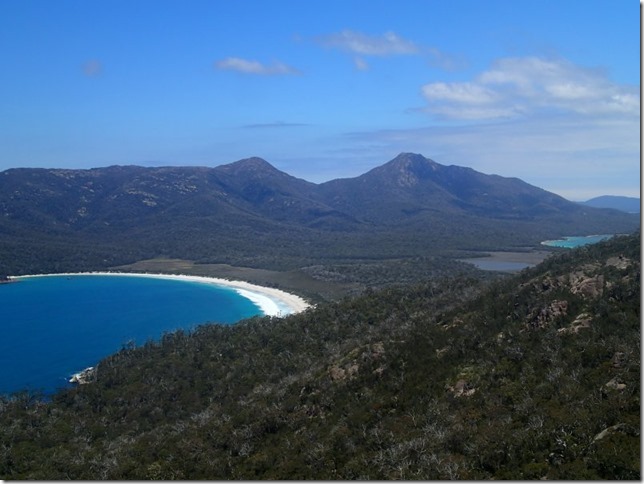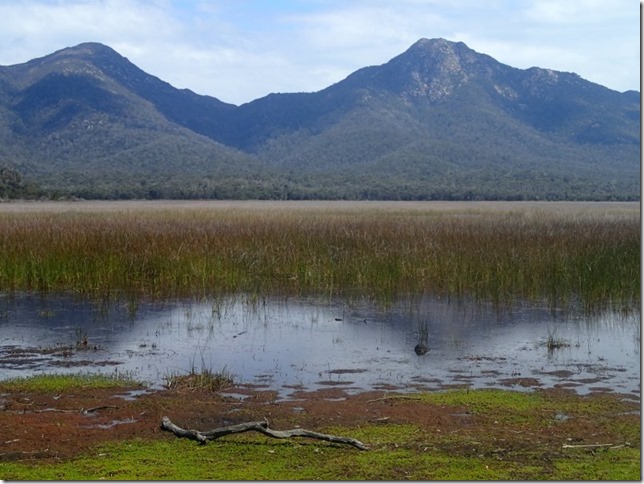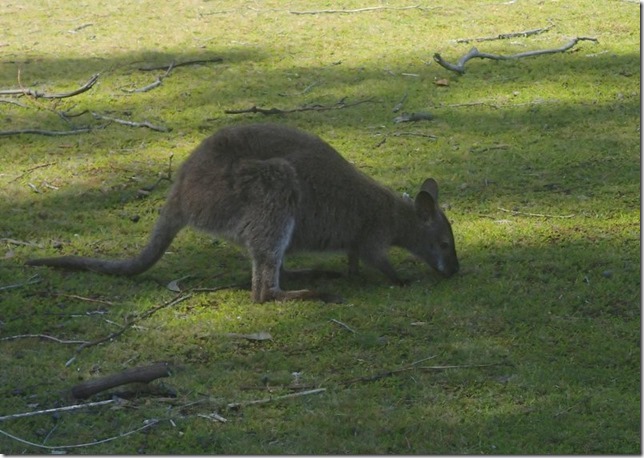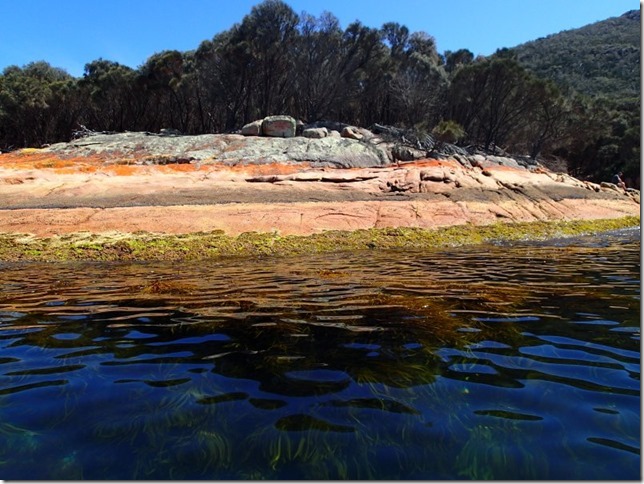Freycinet

VulcanSpirit
Richard & Alison Brunstrom
Thu 18 Dec 2014 05:36
|
The Freycinet Peninsular was named after French navigator and cartographer
Louis de Freycinet who published the first outline map of Australia in 1811 –
whereby hands a tale of deceit and intrigue for another day. It is an area of
pink granite hills and eucalyptus forests with the Pacific Ocean on one side and
Great Oyster Bay on the other.
Breakfast over it was off to the Park. Here is the iconic Wineglass Bay on
the east coast:
 To the right of the Bay is the sand isthmus joining the southern part of
the peninsular to the northern; visible is a freshwater lagoon and on the right
Great Oyster Bay. The hill in the centre is Mount Freycinet.
Here is your hero amongst dry sclerophyll forest (the eastern side of
Tasmania is supposedly much drier than the west; if that’s true then the west
must be very very wet indeed):
 You can see that there is bracken here. It grows on every continent except
Antarctica, using its very light spores to spread around the globe.
And here is the freshwater lagoon:, Mount Freycinet in the
background;
 The lagoon is just full of noisy but totally invisible frogs. There are at
least two species, the tiny Tasmanian Froglet Crinia tasmaniensis and
the Eastern Banjo Frog Limnodynastes dumerilii, also delightfully known
onomatopoeically as the pobblebonk. It really does sound very like the plucking
of a banjo string.
And on the side of the lagoon, grazing the sweet vegetation, a Bennett’s
Wallaby Macropus rufogriseus rufogriseus (one of only two wallaby
species on the island) seemingly completely unconcerned by our presence:
 These animals are supposed to be nocturnal but I guess no one has told
it.
And back to the beach, where proper biological zonation can be seen on the
granite rocks of the sheltered waters of Gt Oyster Bay:
 The natural rock is often pinkish when fresh, but usually weathered and
covered with grey lichen above sea level. At the splash zone is a bright orange
lichen, then a band of nearly bare rock with whitish barnacles, then a line of
blue-black mussels just like those in the UK, then more rock with barnacles and
then lower down brown seaweeds. Note how clear the water is.
We like this
place. |